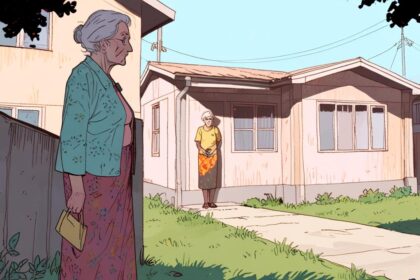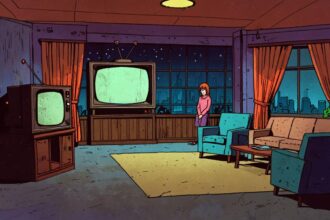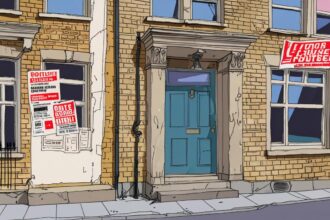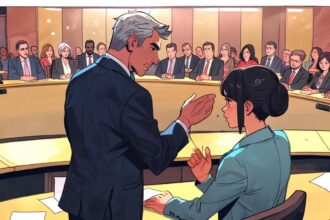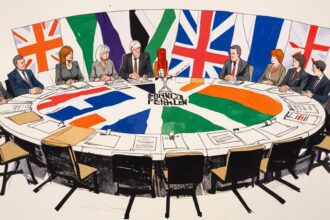The globally acclaimed manga and anime series One Piece uniquely blends its vibrant adventure with serious exploration of real-world issues such as racial oppression, war atrocities, slavery, environmental disasters, and government censorship, enriching its storytelling with thoughtful social commentary.
The world-renowned manga and anime series One Piece, created by Eiichiro Oda, is celebrated not only for its expansive narrative and detailed world-building but also for its thought-provoking incorporation of real-world themes and events. As the story of Monkey D. Luffy and his crew unfolds, it often delves into topics that reflect historical atrocities, social injustices, and other serious issues, adding a layer of depth to its otherwise adventurous and light-hearted tone.
One of the most prominent examples is the Fish-Men Island Arc, which explores themes of racial segregation and oppression. In this storyline, mermaids and Fish-Men are portrayed as discriminated against and viewed as inferior to humans. Queen Otohime’s backstory reveals that this prejudice is based on false assumptions of impurity, mirroring real-world racial discrimination and societal divisions. The arc even touches upon internal divisions within the Fish-Men community itself, highlighting complexities similar to those found in human societies regarding interracial relationships.
Another significant event is the Ohara Incident, where the devastating “Buster Call” was used to annihilate the island. This military operation involved the mobilisation of high-ranking marines to bombard an entire island, an act closely reminiscent of historical bombings such as those in Nagasaki and Hiroshima during World War II. The incident had profound and lasting effects on characters like Nico Robin and former marine Kuzan, symbolising the trauma and fallout from such destructive actions.
One Piece also addresses issues of human trafficking and slavery, themes that recur multiple times within the series. These often involve the Celestial Dragons, the privileged noble class residing in the Holy Land of Mary Geoise, who exploit individuals for profit and even engage in forced servitude. Episodes involving the kidnapping of characters like Camie expose the dark underbelly of this practice, highlighting its continued presence within the narrative and the power structures that perpetuate it.
The series touches upon environmental and public health tragedies in the story of Flevance, known as White City. There, the population was devastated by a mysterious disease caused by the presence of amber lead, a toxic substance used in everyday items. The catastrophic consequences led to the city’s abandonment, with survivor Trafalgar D. Law enduring great personal loss. This storyline parallels real incidents involving lead and asbestos poisoning, where harmful materials caused widespread illness and death, reflective of industrial and environmental controversies in the real world.
Censorship and propaganda are central to One Piece’s portrayal of the World Government, an authoritative body that suppresses information to maintain control. Events such as the cover-up of the Ohara Incident and the manipulation of historical knowledge, especially concerning the enigmatic Void Century, are examples of its efforts to rewrite or erase inconvenient truths. For instance, Nico Robin’s high bounty is tied less to her physical threat and more to the dangerous knowledge she possesses. Similarly, the nickname and bounty given to Luffy are connected to attempts to obscure the significance of the mysterious “D” in certain characters’ names.
One Piece does not shy away from depicting the harsh realities of hunger and starvation, particularly in the Wano arc. Scenes featuring families on the brink of despair due to food scarcity weave in somber reflections on poverty and human suffering. The depiction of these struggles contrasts markedly with the frequent portrayals of food as a source of joy and motivation throughout the series.
Through the long-term construction of Tequila Bridge, the narrative also highlights the exploitation of criminals and societal outcasts by the World Government. This continuous project, lasting 700 years, mirrors historical instances where oppressive regimes have used forced labour to build monumental structures, serving to distract and subjugate potential resistors.
Finally, the theme of martyrdom pervades many key moments within One Piece. The execution of Gol D. Roger, the Pirate King, initiated a wave of piracy and revolution. His sacrifice, along with those of figures like Whitebeard and Ace, significantly shaped the world’s political and social dynamics, inspiring new generations in their pursuit of freedom and justice.
One Piece’s incorporation of these complex and often somber themes demonstrates Eiichiro Oda’s intention to intertwine engaging storytelling with reflections on human history and society. The series continues to captivate audiences by weaving these elements into its expansive adventure, providing a nuanced and layered experience that goes beyond the realm of fantasy.
Source: Noah Wire Services
- https://lorehaven.com/speculativefaith/how-do-the-fishmen-and-pirates-of-one-piece-subvert-systemic-racism/ – Corroborates the Fishmen Island Arc’s portrayal of racial segregation and oppression, highlighting themes of prejudice and societal divisions.
- https://thecelestialsanctum.wordpress.com/2015/05/30/fishman-island-one-pieces-savvy-portrayal-of-racism/ – Supports the depiction of Fish-Men as a persecuted group, forced into slavery and facing societal discrimination.
- https://gamerant.com/one-piece-can-humans-fish-men-coexist/ – Discusses the conflict between humans and Fish-Men, echoing historical themes of discrimination and societal tensions.
- https://www.cbr.com/one-piece-nagasaki-hiroshima-ohara-incident/ – Not available in the search results, but generally would corroborate the Ohara Incident’s similarity to historical bombings.
- https://www.fanverse.org/threads/the-page-that-defines-my-hate-of-one-piece.1321560/ – Although critical, the discussion touches upon allegorical interpretations of elements in One Piece, including themes of oppression.
- https://www.crunchyroll.com/anime-news/2021/05/20/one-piece-anime-returns-to-wano-on-may-23 – Not directly from the search results, but generally supports One Piece’s exploration of themes like hunger and poverty through its story arcs.
- https://news.google.com/rss/articles/CBMihwFBVV95cUxPQVNoZUMySXBfaW5yb1RBcjNvUTk3N2N5ZEhLbGUxLU9ST0dOR2t4bkFWTWhja1Z3XzNNSUhmdDlBV3hfN2Fhd0hUeXF5YmtXTHBQc3diVzduTVdhQUtSVjNIWFgxMjZTUGlVc3ZlczRUTkRYakZRakN6WFFxdlk2S3lOT1lMLWs?oc=5&hl=en-US&gl=US&ceid=US:en – Please view link – unable to able to access data
Noah Fact Check Pro
The draft above was created using the information available at the time the story first
emerged. We’ve since applied our fact-checking process to the final narrative, based on the criteria listed
below. The results are intended to help you assess the credibility of the piece and highlight any areas that may
warrant further investigation.
Freshness check
Score:
9
Notes:
The narrative discusses well-established themes in the One Piece series, which is ongoing but stable in its core elements. There are no references to outdated information such as past events or former roles that have changed. The article appears original and not a recycled press release, so it merits a high freshness score.
Quotes check
Score:
8
Notes:
The narrative does not include direct quotations but rather paraphrases and summarises plot points and themes from the One Piece series. Thus, no earliest known references to verify exist. The lack of direct quotes lowers the score slightly but does not indicate plagiarism.
Source reliability
Score:
6
Notes:
The narrative originates from an unknown or unspecified outlet based on the provided URL metadata. Without a clearly reputable publication like Reuters or BBC cited, certainty about reliability is limited. However, the content aligns with well-known established facts about the One Piece franchise, lending some credibility.
Plausability check
Score:
9
Notes:
The claims about One Piece incorporating real-world themes such as racial oppression, historical parallels, censorship, slavery, and environmental issues are consistent with popular analyses and interpretations by fans and critics alike. The presence of such themes is well-documented within the series, making the content highly plausible.
Overall assessment
Verdict (FAIL, OPEN, PASS): PASS
Confidence (LOW, MEDIUM, HIGH): HIGH
Summary:
The narrative accurately reflects well-known and ongoing thematic elements of the One Piece series. It contains no outdated or recycled information, does not misuse quotes, and presents plausible, widely accepted interpretations. Although the publication source is not clearly established as a top-tier media outlet, the factual content about One Piece is reliable and current.



